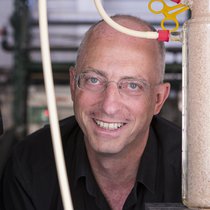In a circular society waste streams are efficiently recycled and upcycled. This also holds true for waste streams from a wastewater treatment plant. Two main waste streams from a wastewater treatment plant are cellulose fibers and a class of biopolymers known as Kaumera. It is common practice in the Netherlands to digest or incinerate these streams. However, these streams can also be used to produce a high-value lightweight bio-composite material.
Cellulose and biopolymers like Kaumera can be combined to yield a lightweight biocomposite material that can be applied in the transport or building sector. Such Kaumera-cellulose-biocomposites save energy in comparison to standard fossil-based composites for the following two reasons. Firstly, up to 67% less primary energy is consumed in the production process of an Kaumera-cellulose-biocomposite compared to a composite of glass fibre and polyester. Secondly, energy is saved during the use of a Kaumera-cellulose-biocomposite as such a composite is up to 25% lighter than a traditional fossil based composites. In a transport application a lower weight translates to a lower fuel consumption and thereby energy saving. Next to being lightweight and stiff, the first test-samples of the Kaumera-cellulose-composite are also non-flammable.
The “Converting Wastewater into Composites” (WASCOM) project aims to create a prototype of a high-quality, lightweight bio-composite. The project is a collaboration between Delft University of Technology, ChainCraft, NPSP, Waternet and the AMS Institute. Delft University of Technology is the leading expert in research on biopolymers and wastewater treatment, ChainCraft aims to identify new routes for the application of Kaumera, Waternet aims to commercialize its cellulose fibers stream, NPSP is expert in the production of high value light weight biocomposites and the AMS Institute aims to close waste streams on a metropolitan level to accelerate the transition to a circular society.
Principal Investigators
Project members
Partners




